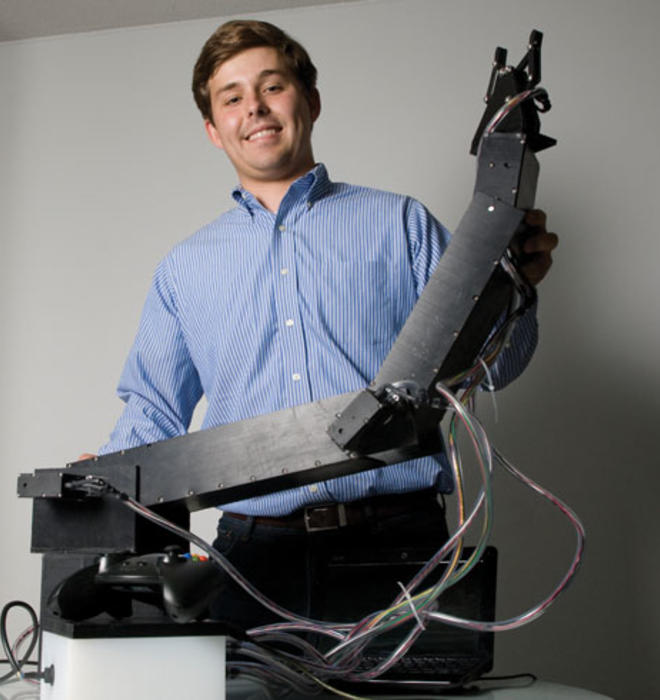
Two summers ago, Richard “Ben” Rush ’11 worked in Seattle for OceanGate, a company co-founded by his father, R. Stockton Rush ’84. OceanGate builds and operates manned, submersible vehicles for underwater exploration. Those submersibles can descend to depths of several hundred feet or more, but they lack a reliable robotic arm to help the scientists inside manipulate objects they come across. Rush, a mechanical and aerospace engineering major who was looking for a thesis topic, decided to design one.
To keep costs down, Rush used as many off-the-shelf materials as he could. He started with a motor he bought at a hobby store, but no standard motor would work under the tremendous pressure — up to 500 pounds per square inch — to which it would be exposed. So Rush filled the motor chamber with oil and attached a plastic bag to the outside of the arm to counteract the pressure. He also coated the arm with a special material made of glass microspheres and epoxy resins to give it greater buoyancy.
Designing the controlling software posed an equally daunting challenge. The arm has many joints, enabling it to bend in different directions, which makes it difficult for an operator to control them all manually. Rush chose to design software that lets the user specify where the arm needs to go but lets the arm’s control mechanism determine the best way to get there. This required Rush to create an “artificial neural net,” an algorithm that mimics the behavior of neurons in the brain to determine the best solution to a complex problem. The arm can be controlled either by someone in the submersible or by someone in a boat on the surface using a reconfigured Xbox controller.
He succeeded in building a prototype of his submersible arm that worked on land and tested it in a high-pressure chamber. He is confident that it will also work at sea. When fully functional, the arm will have a reach of up to three feet.
It is not designed to lift or move large, heavy objects, but would be used by people inside a submersible to move a piece of kelp that was obstructing their view, for example, or to take soil samples from the ocean bottom. “It is targeted for research and observation,” he says.
Rush is now working for a Seattle company that makes high-resolution sonar-imaging equipment. He still tinkers with the submersible arm in his basement, and plans to conduct the first underwater tests soon.






No responses yet